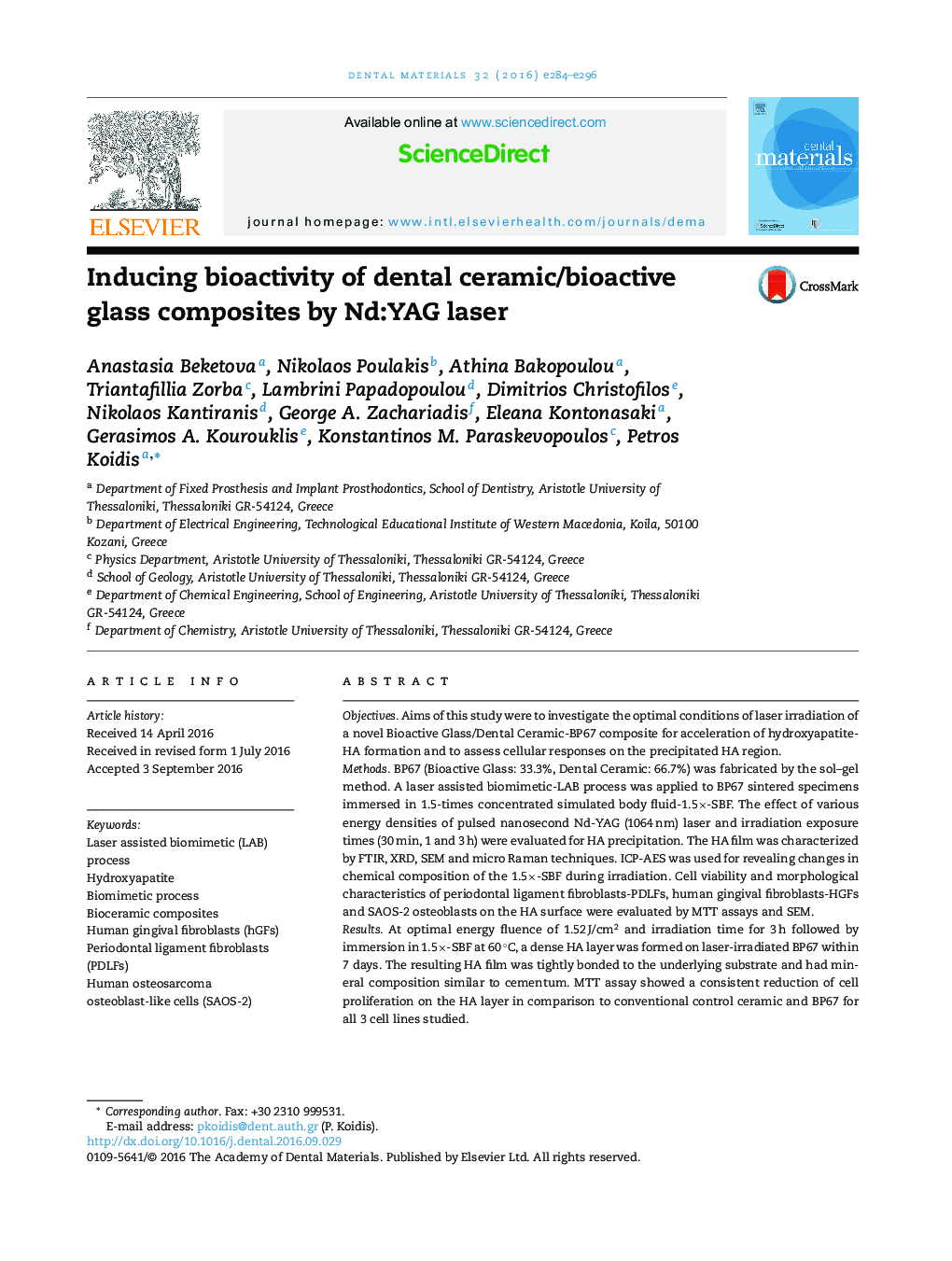| Article ID | Journal | Published Year | Pages | File Type |
|---|---|---|---|---|
| 5433208 | Dental Materials | 2016 | 13 Pages |
â¢A novel method for inducing bioactivity of dental ceramic/bioglass composites by using laser energy has been proposed.â¢Application of specific laser irradiation parameters results in 3 times faster formation of HA coating compared to conventional biomimetic method.â¢A HA film with mineral composition close to dental cementum could be obtained.â¢LAB process is potentially applicable for functionalization of materials with low bioactivity under precise control of laser irradiation parameters.
ObjectivesAims of this study were to investigate the optimal conditions of laser irradiation of a novel Bioactive Glass/Dental Ceramic-BP67 composite for acceleration of hydroxyapatite-HA formation and to assess cellular responses on the precipitated HA region.MethodsBP67 (Bioactive Glass: 33.3%, Dental Ceramic: 66.7%) was fabricated by the sol-gel method. A laser assisted biomimetic-LAB process was applied to BP67 sintered specimens immersed in 1.5-times concentrated simulated body fluid-1.5Ã-SBF. The effect of various energy densities of pulsed nanosecond Nd-YAG (1064 nm) laser and irradiation exposure times (30 min, 1 and 3 h) were evaluated for HA precipitation. The HA film was characterized by FTIR, XRD, SEM and micro Raman techniques. ICP-AES was used for revealing changes in chemical composition of the 1.5Ã-SBF during irradiation. Cell viability and morphological characteristics of periodontal ligament fibroblasts-PDLFs, human gingival fibroblasts-HGFs and SAOS-2 osteoblasts on the HA surface were evaluated by MTT assays and SEM.ResultsAt optimal energy fluence of 1.52 J/cm2 and irradiation time for 3 h followed by immersion in 1.5Ã-SBF at 60 °C, a dense HA layer was formed on laser-irradiated BP67 within 7 days. The resulting HA film was tightly bonded to the underlying substrate and had mineral composition similar to cementum. MTT assay showed a consistent reduction of cell proliferation on the HA layer in comparison to conventional control ceramic and BP67 for all 3 cell lines studied.SignificanceThese findings suggest LAB is an effective method for acceleration of HA formation on materials with low bioactivity, while cellular responses need further investigation.
